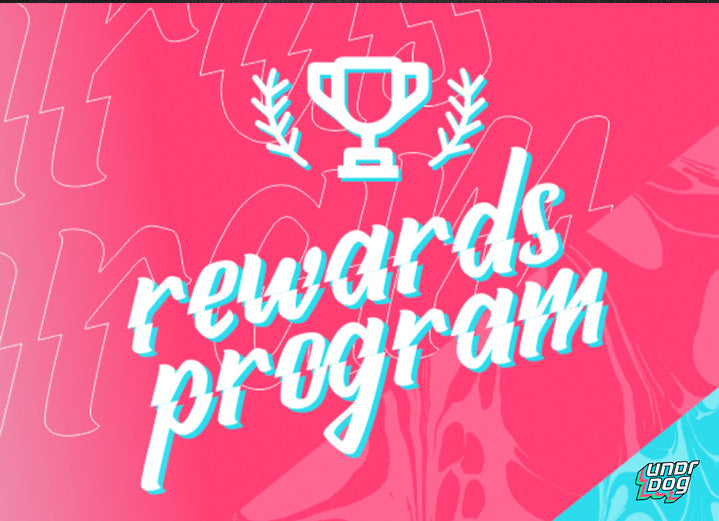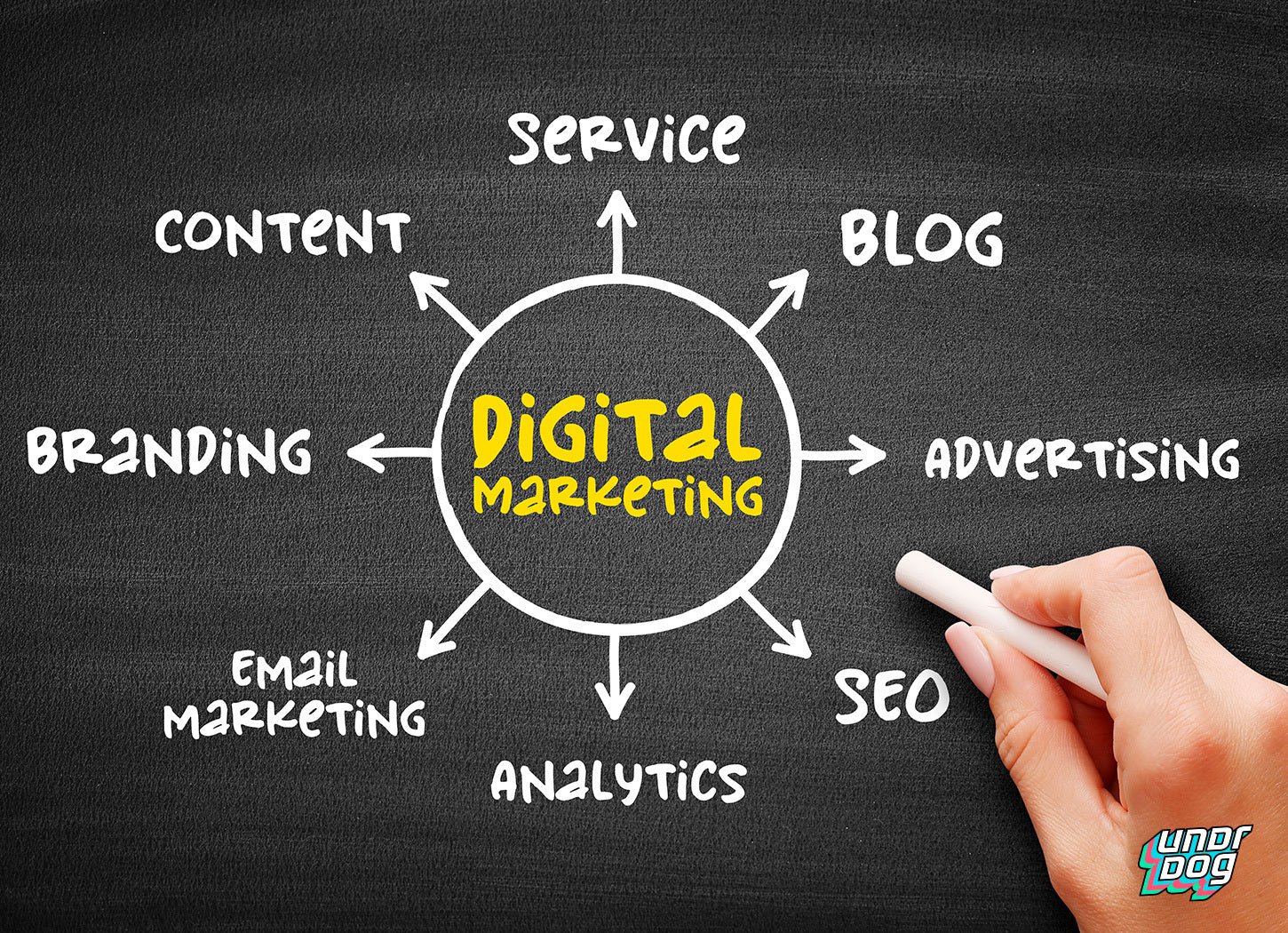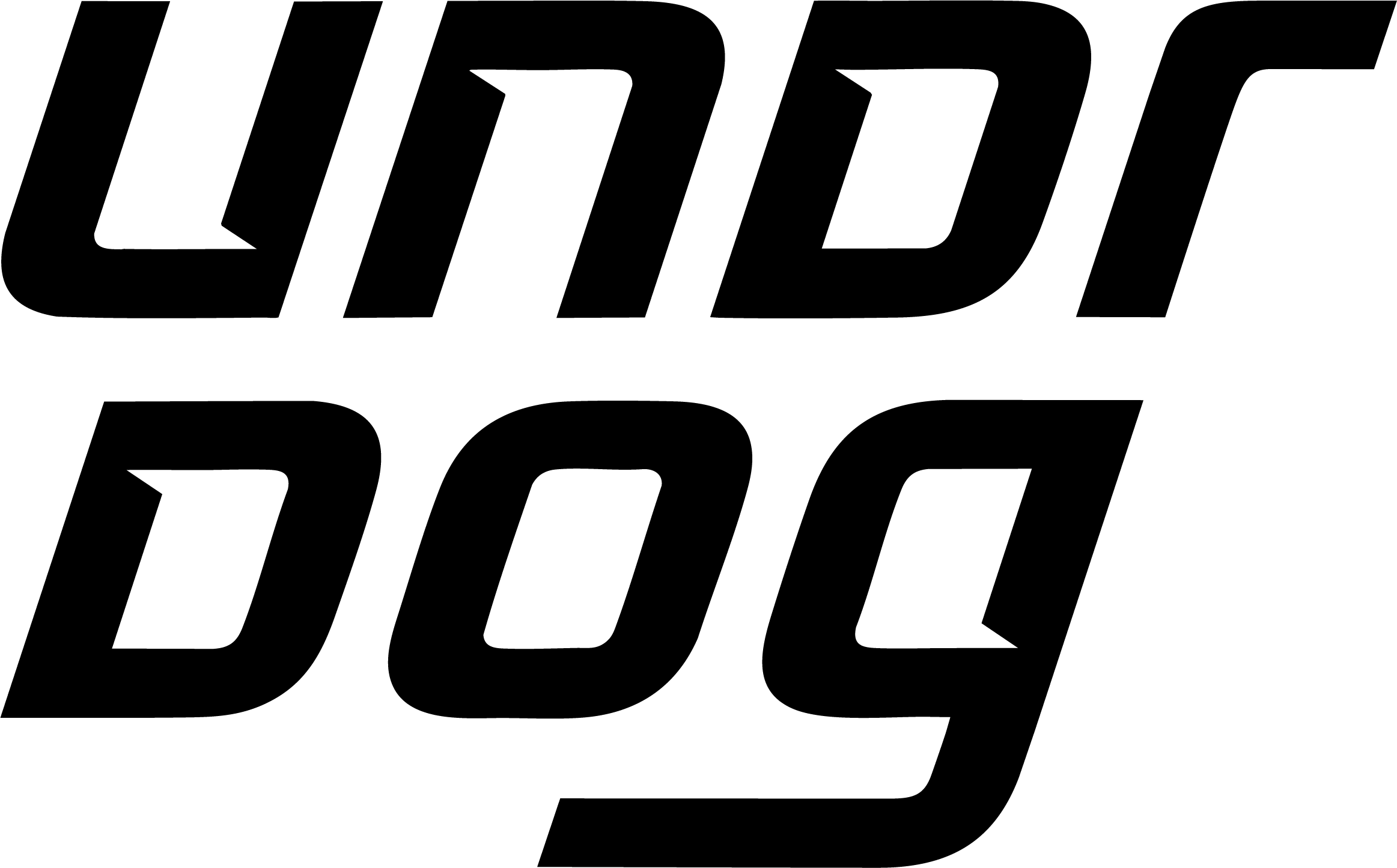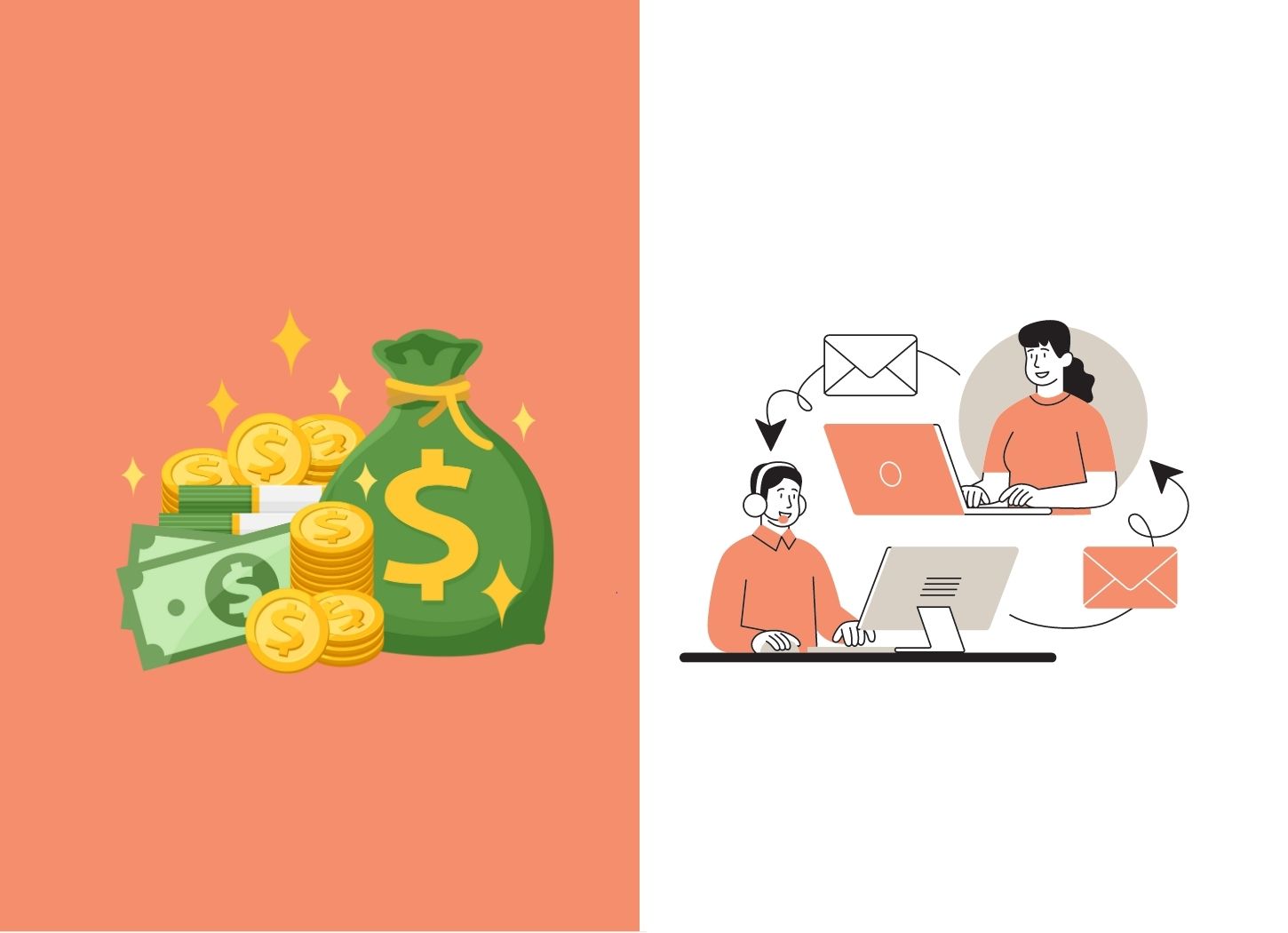
Intro
Running a business means tethering between growth and stabilization. When you’re starting, you need to grow. Then you reach a certain threshold you need to stabilize and not spiral out of control.
Too many clients sometimes mean all-nighters and that’s not healthy neither for you nor for your business. Dependable and even predictable income is what it’s all about so that teether is very important.
Ultimately, you want your business to grow, but periods of stabilization and plateauing are necessary to optimize your processes and your costs and make sure that you don’t die from thirst if the water stops flowing.
Having a successful referral program is one of the essential pillars of any business because of helps both sides:
- It helps you grow your customer base at a low cost (no advertising needed).
- But it also helps you increase loyalty and customer lifetime value.
Also, a referral program has a very high ROI, but this is going to be specific to your services and prices. The good people from ReferralRock have written an amazing article about calculating your referral program’s ROI.
Let’s look at what one of the best business strategists has to say about growing a business.
Enter Jay Abraham.
Jay Abraham’s Three Ways to Grow a Business
Jay famously said that there are only three ways to grow any business, and they are:
- Increase the number of clients
- Increase the average transaction value
- Increase the frequency of repurchase
So let’s dissect all three of them:
Increase the number of clients
When we talk about the number of clients, we talk about the ones that are active, not necessarily new customers. This is because if someone hasn’t purchased from you in months or years, their coming back will be the same for your budget as if they were completely new.
So let’s see some of the different ways you can get more (active) clients:
Lead generation
Well, you knew I’d start with this one. There’s just no way around it: you need to generate new leads for your business.
One of the easiest ways to get new clients is to ask your existing ones to recommend their friends and family. Enter the referral systems. This escalated quickly, didn’t it?
Referral Program
Essentially, a referral system is a way for people to recommend others for a little something in return. Not that you didn’t already know what it is, but it’s always nice to cut down to the bone and see things for what they are.
I’m only saying this because nowadays, there’s a plethora of different software tools that bundle features from different fields together and make it hard to find the one that really fits your case.
We’ll dive into this tactic much deeper a bit later, but let’s look at some other ways to generate leads.
Facebook and Google Ads
One of the quickest ways to get the word out and generate leads is by running Facebook ads.
Be it a regular ad that takes people to your website where they have to fill in a form, or a Facebook lead ad, Facebook is known to have a vast audience that you can tap into.
The only potential downside could be the cost of acquisition, which you’ll have to discover yourself through testing and see if it’s a viable source of new customers for your business.
Facebook advertising uses the pattern interrupt tactic, which means that the people aren’t looking for your stuff until you shove it in their faces.
On the other hand, Google ads are intent-based, which means they’re looking for what you have to offer. That could imply higher conversion rates.
In our Detailing Business Resources, you'll find a ton of very useful articles about running Google ads, and Facebook ads, getting more reviews, writing content, and doing local SEO, as well as much, much more. Give it a read, and if possible, several times.
Guerrilla Marketing
A loose description of guerrilla marketing is using unconventional methods to gain attention or sell. In my mind, “unconventional” means not only new and never seen before but whatever people aren’t used to.
When you think about it, before the Internet, people almost only used guerrilla and advertising, there just wasn't any other way.
Think parking lots, pop-up booths, chalk ads on the sidewalk… Even shock and awe stuff like letting everyone’s kids draw on the dirty car, after which you’ll wash and polish one panel or even a half, letting everyone see your skills.
Partnerships
This is a classic one: partner with local car dealerships to offer your services as an upsell. It can either be for a commission or as a white label that they can sell under their brand.
Another idea for partnerships could be finding a local famous person, like a singer or a street artist, detailing their car, and asking them to talk about it in exchange.
Car Shows
Local car shows can be a great way to showcase your skills. You can detail a car prior to the show and have a pamphlet on the windshield and have everyone see the difference.
Chances are that all other cars will have swirls and holograms and that the difference will be very noticeable.
SEO and Google My Business
A lot of people have an ache when you mention SEO to them, and understandably so. SEO is a kind of a black box even for experts in the field, let alone for beginners.
However, there are some steps to make sure that you have your basics set. And what we did is put together a series of articles giving you all the information you need to get them in order.
Here they are:
Optimize Your Google Business Profile For Success
How to Get More Google Reviews For Your Detailing Business
Go ahead, start using some of these techniques, and find your sweet spot. Just keep in mind that if you’re doing a great job, your existing customers are your best ad.
That’s why this article is all about the referral program, but we needed to get these out of the way first.
Client retention rate
If you’ve been in business for a while, chances are you have a certain amount of your past clients that didn’t call you in a longer period of time.
To re-activate them, you could do some of the following things:
Set up reminders
Set yourself a set of reminders on your phone to call them after a certain amount of days, weeks, and months. Follow up via phone, personally, and don’t use emails or SMS. Personalize reminders as much as you can.
Maintenance washes and tune-ups
Explain that maintenance washes and tune-ups after a certain amount of months would be very beneficial to keep their car in pristine shape after 3, 6, and 12 months.
Tie them into a Membership Club
This is not something that a lot of detailers do, but creating a local membership club where customers can access detailing and washing services at a discount, could create a buzz and re-engage some of the old customers.
Conversion rate
The third aspect of generating leads is having a good conversion rate. Look at it like approaching someone at a bar. If your pickup line is good, the conversation will likely happen. If it’s not, nobody will care that you're potentially a great partner. But if your pickup line is great and you can spark a conversation, your “conversion rate” will be much higher.
In your efforts to generate leads, four things play a major role:
Clarity
It’s essential to send a clear message and articulate the value that they’re getting from you as precisely as possible.
Their motivation
Understanding and leveraging what motivates them to use your service will help you better formulate your value proposition.
Incentive
Having a good answer as to why now and not at a later date is essential to making things happen when you want it. When things drag out is when you’ll lose confidence, and they’ll lose interest.
Friction
Try to find out if there is anything blocking them from getting your service. Are they too far away from you, do they have a replacement car during the time you’ll work on their main one, is there anything that puts them off, etc.
Knowing the friction elements in the process will help you eliminate or avoid them.
Increase the average transaction value
The second way to grow your business is by increasing your average transaction dollar amount. You can achieve this in a few ways:
Increase your prices
Plain and simple, if you increase your prices, given that you keep the same number of transactions, you’ll grow your business. However, increasing prices oftentimes comes with a trade-off, and you might lose some customers.
Note that this technique can be used to hinder your growth and stabilize your processes, and there are times when you’ll want that. Let’s entertain an example of this:
Imagine you’re in an area with very high seasonality, maybe a lake where people go boating from April to October. Let’s add to this that there are no big cities around and that the customers are coming in from afar, oftentimes towing their boats to the lake.
During low months, you won’t have nearly as much work as in the high months, and by accepting all the business, you might spread yourself too thin. Or worse yet, hire seasonal workers who don’t have enough experience or skill and could botch a job, hurting your reputation.
You’re beginning to see now how wanting it all could hurt you. You can avoid that by increasing your prices and controlling the amount and scope of jobs you accept.
However, if you’re not in a position to want to hinder your growth, simply raising the prices could cost you some jobs. An alternative to that would be to change the profile of your services so you can increase the prices.
Changing the profile means that you re-package your service to appeal to a higher-income group that could pay more for your services. In some cases, that requires adding more stuff to your standard offering, but oftentimes, it means better explaining all the ins and outs of what you do.
You think you're offering boat detailing? Think again. You’re actually offering to take their valued possession into a pristine shape.
Upsells & Bundles
Being able to upsell during the sales conversion can make a huge difference in your bottom line.
In case the job you’re talking about with the client is about paint correction and a protective coating, try offering your wheel detailing package as well.
You’re going to be washing their wheels during an exterior wash anyway, so why not spend some extra time on them and have the car look even better?
Also, consider bundling individual services into packages in order to extract more from a single job while the car is already sitting in your shop.
Increase the frequency of repurchase
The third way to grow your business is to increase the number of times a customer buys from you. This can be achieved by signing them up for a service program with maintenance washes or by having them bring more of their vehicles or even a boat.

The main way companies do this is by offering a Loyalty Program. As a matter of fact, Undrdog’s rewards program is a very important element of our customer experience, and many people come back just because they have points.
It’s no secret that many other huge companies and department stores use the same technique. Every 10th wash is free. Get a free Quick Detailer top-up after your 6th wash. Things of that nature.
I’ll circle back to this when we dive into the referral programs, but try thinking about what services/freebies you can offer for people who are loyal to you.
How to build a referral program?
We already said that a referral program is a way for people to recommend others to your services in exchange for a little something in return.
In order to build a referral program, you need to go through a few things and have them sorted out.
Average Customer Value
Determining how much an average customer is worth to you is essential because it’ll help you craft your referral incentives.
Referral Incentives
Referral incentive for the referee: Offering incentives to referees can be a game-changer. Consider giving them a discount on their first purchase or a free service upgrade. This not only entices them to try out your service but also creates a positive first impression.
Referral incentive for the referrer: Rewarding your loyal customers for bringing in new clients is essential. Offer them exclusive deals, discounts on future purchases, or even cashback. This encourages them to spread the word more frequently.
Introducing tiered rewards can motivate customers to refer more people. For instance, after five successful referrals, they could receive a more significant discount or a free product. This system encourages continuous engagement and turns your customers into active promoters.
Build Your Referral Program
Planning is crucial, but execution is where the real magic happens. Decide on the method that aligns with your business model. Whether it's the traditional manual approach with tangible materials such as referral cards or a digital method, ensure it resonates with your target audience.
You can build it the old way - manually with stickers and flyers, or you can go with referral software.
Build Your Referral Program Manually
Step 1 - Excel: Start by creating a spreadsheet to track referrals, their status, and the rewards given.
Step 2 - Randomize: Use randomization techniques to ensure fairness in reward distribution.
Step 3 - Design: Design attractive flyers and stickers that resonate with your brand and message.
Step 4 - Print: Ensure high-quality prints that are durable and eye-catching.
Step 5 - Shred once used: To maintain data privacy, shred any physical records once they're no longer needed.
Or you can choose a software.
Choose Your Referral Software
Referral Candy: Popular for its customizable reward system.
ReferralCandy is a dynamic referral marketing tool designed for eCommerce businesses. It stands out for its customizable reward system, allowing brands to incentivize both referrers and referees effectively. With its automated invitation feature, businesses can easily engage customers post-purchase, encouraging them to share and refer. The platform integrates with various marketing tools, ensuring a seamless experience for users and their customers.
ReferralRock: Offers seamless integration with various platforms.
ReferralRock offers a versatile referral marketing solution suitable for any business, not just eCommerce. It boasts seamless integration capabilities with various platforms, ensuring that businesses can tap into their existing customer base to drive new referrals. The platform focuses on automating the referral process, from invitation to reward distribution, making it easier for businesses to scale their referral efforts and track performance.
Ambassador: A leader in referral marketing with extensive tracking capabilities.
Ambassador is a leading referral marketing platform known for its extensive tracking and analytics capabilities. It provides businesses with the tools to launch and manage multiple referral campaigns, from customer referrals to partner and affiliate programs. With its unique share links and QR codes, Ambassador ensures that brands can engage customers both online and offline. The platform also emphasizes customer loyalty, offering features that help businesses retain and reward their most loyal customers.
Referral Hero: Emphasizes community building and engagement.
Referral Hero stands out by emphasizing community building and engagement. Their platform is designed to foster genuine connections, turning customers into active promoters. By focusing on community, Referral Hero ensures that referrals feel organic rather than forced, leading to higher conversion rates. Their system is not just about acquiring new customers but also about strengthening the bond with existing ones. This approach ensures that the referrals are not just numbers but become an integral part of the community, leading to long-term customer loyalty.
Referral Factory: Offers a plethora of templates and designs.
Referral Factory boasts a vast collection of templates and designs, allowing businesses to create referral programs that align with their brand identity. Their platform is designed for those who want a quick and efficient way to set up a referral program without compromising on aesthetics. The variety of designs ensures that businesses of all types can find something that resonates with their audience. Beyond aesthetics, Referral Factory also offers robust tracking and analytics, ensuring that businesses can monitor and optimize their referral campaigns for maximum impact.
SparkLoop: Renowned for its automation features.
SparkLoop is renowned for its automation features, streamlining the referral process for businesses. Their platform is designed to handle most of the heavy lifting, from tracking referrals to sending out rewards. This level of automation ensures that businesses can focus on their core operations while the referral program runs in the background. SparkLoop's emphasis on automation doesn't mean a lack of customization. Businesses can tailor their referral campaigns to fit their specific needs, ensuring that they resonate with their target audience.
Viral Loops: Focuses on creating viral referral campaigns.
Viral Loops focuses on creating referral campaigns that have the potential to go viral. Their platform is built on the premise that a successful referral program can exponentially increase a business's reach. By leveraging social proof and network effects, Viral Loops aims to turn every customer into a promoter. Their tools and templates are designed to encourage sharing and engagement, ensuring that referral campaigns spread quickly and effectively. This approach not only brings in new customers but also strengthens the bond with existing ones.
InviteReferrals: Simplifies the referral process with its intuitive design.
InviteReferrals simplifies the referral process with its intuitive design. Recognized as a powerful referral software, it aids businesses in growing through referral marketing. The platform tracks every step of the program, from shares to successful conversions, ensuring transparency and effectiveness. With features like automated reward fulfillment and a focus on making customers brand ambassadors, InviteReferrals offers a comprehensive solution. Their emphasis on simplicity ensures that both businesses and their customers have a seamless experience.
GrowSurf: Prioritizes analytics and tracking.
GrowSurf prioritizes analytics and tracking, ensuring that businesses have a clear view of their referral program's performance. Designed for tech companies, GrowSurf offers a solution that automates customer acquisition at a low cost. Their platform boasts impressive statistics, with many customers reporting significant returns on investment and a substantial percentage of new leads coming from referrals. GrowSurf's emphasis on analytics ensures that businesses can continuously optimize their referral campaigns, leading to sustained growth and success.

Promoting Your Referral Program
Promotion isn't just a step; it's the lifeblood that determines the success of your referral program. In today's digital age, there are numerous avenues to explore:
1. Social Media Platforms
Platforms like Facebook, Twitter, Instagram, and LinkedIn are invaluable tools. Create engaging posts, stories, or even short videos that explain the benefits of your referral program. Use targeted ads to reach a broader audience and consider creating shareable content that your existing customers can use to refer friends and family.
2. Email Marketing
Send out newsletters or dedicated emails to your existing customer base. Craft compelling subject lines and content that clearly convey the rewards and benefits of referring. Remember to include clear calls-to-action and easy-to-use referral links.
3. In-Person Events
While digital methods are prevalent, don't underestimate the power of face-to-face interactions. Attend trade shows, local fairs, or community events and promote your referral program. Personal interactions can often lead to more genuine and enthusiastic referrals.
4. Highlighting Benefits and Rewards
Make sure potential referrers understand what's in it for them. Whether it's monetary rewards, exclusive discounts, or early access to new products, clearly communicate the value of participating in the program.
5. Collaborations
Partnering with influencers can give your program a significant boost, especially if they have a following that matches your target audience. Similarly, collaborating with local businesses can be a win-win situation. Consider joint promotions or events that can benefit both parties while promoting your referral program.
By leveraging these strategies, you can ensure that your referral program not only reaches a wide audience but also resonates with potential referrers, leading to increased participation and success.
Tracking the Effectiveness of Your Referral Program
Understanding the performance of your referral program is not just beneficial—it's crucial. Without proper tracking and analysis, you might be investing resources without reaping the desired results.
Here's a deeper dive into how you can effectively track and optimize your referral program:
1. Utilizing Analytics Tools
Modern referral programs often come with built-in analytics, but if yours doesn't, integrate it with tools like Google Analytics or specialized referral tracking software. These tools can provide granular data on various aspects of your program.
2. Key Metrics to Monitor
Number of Referrals: This gives a straightforward count of how many people have been referred to your business.
Conversion Rates: It's not enough to just get referrals; you need to know how many of these referrals actually converted into paying customers or subscribers.
Overall ROI: Calculate the return on investment by comparing the revenue generated from referrals to the costs associated with running and promoting the referral program.
3. Customer Feedback
Beyond just numbers, get qualitative feedback from both referrers and referees. This can provide insights into what's working and what's not, allowing you to make necessary adjustments.
4. Regular Reviews
Set aside time, whether monthly or quarterly, to review the performance of your referral program. Look for trends, such as a sudden spike in referrals or a drop in conversion rates, and try to understand the reasons behind them.
5. Strategy Adjustments
Based on the insights from your analytics and reviews, make necessary adjustments. This could mean changing the referral incentives, tweaking the promotional strategies, or even overhauling the referral process if needed.
6. Continuous Growth
The ultimate goal is sustainable growth. By regularly tracking and adjusting your referral program, you ensure that it remains effective and continues to drive new customers to your business over time.
In essence, a referral program is not a 'set it and forget it' initiative. It requires continuous monitoring and optimization to ensure it remains a valuable asset for your business's growth strategy.
FAQ
We've compiled a list of frequently asked questions to shed light on the ins and outs of referral programs. From understanding the basics to uncovering advanced strategies, we've got you covered. Let's dive in!
What is a referral?
A referral is when an existing customer or client recommends a product, service, or business to someone they know. It's a word-of-mouth marketing strategy that leverages the trust and relationships of current customers to attract potential new ones.
What are some effective referral marketing strategies?
Effective referral marketing strategies include: 1) Offering mutually beneficial rewards. 2) Making the referral process simple and straightforward. 3) Regularly promoting the referral program to your customer base. 4) Personalizing the referral experience. 5) Using social proof, like testimonials, to build trust. 6) Continuously analyzing and optimizing the program based on feedback and results.
Which companies have the best referral programs?
Some of the best referral programs come from companies like Dropbox, Airbnb, and Uber. They've successfully incentivized users to refer friends by offering tangible benefits like extra storage space, travel credits, or discounted rides. Their programs stand out because of their simplicity and the value they offer to both parties.
How can I set up a referral program for a service business?
For a service business, consider offering a discount on future services for every successful referral. Alternatively, you could provide a free add-on service or even a cash reward. The key is to ensure that the incentive aligns with the nature of your service and appeals to your clientele.
What are some effective referral marketing strategies?
Effective referral marketing strategies include: 1) Offering mutually beneficial rewards 2) Making the referral process simple and straightforward 3) Regularly promoting the referral program to your customer base. 4) Personalizing the referral experience 5) Using social proof, like testimonials, to build trust 6) Continuously analyzing and optimizing the program based on feedback and results.
Final Words

Creating an effective referral program is a blend of strategy, execution, and continuous improvement. By offering enticing incentives, promoting your program effectively, and tracking its success, businesses can harness the power of word-of-mouth marketing.
This not only boosts customer acquisition but also fosters loyalty among existing clients. In the digital age, where every customer's voice can be amplified, a well-structured referral program can be the catalyst that propels a business to new heights.
Remember, the most genuine and impactful promotions come from satisfied customers. Embrace their potential, and your business will thrive.





Leave a comment
This site is protected by hCaptcha and the hCaptcha Privacy Policy and Terms of Service apply.